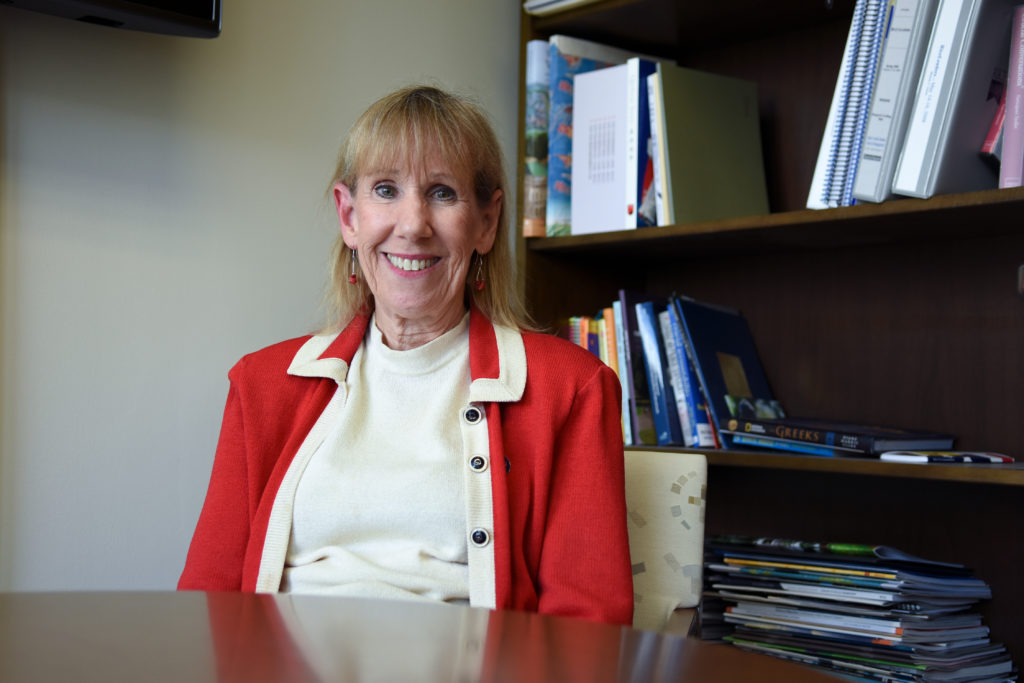Updated: Feb. 6, 2020 at 9:50 a.m.
Five years into GW Libraries’ seven-year strategic plan, the department has provided increased support to students and faculty to raise GW’s academic and research profiles.
The plan was designed five years ago to revamp the study spaces in GW’s libraries, increase trainings on topics like data visualization and boost the University’s research efforts by making it easier to locate research funding and resources, in conjunction with GW’s strategic plan at the time. While GW’s priorities – and her department – have changed significantly since 2014, Libraries and Academic Innovation Dean Geneva Henry said she is happy with the progress her department has made on its goals.
“I am extremely pleased with the progress GW Libraries and Academic Innovation has made toward our goals in the past five years, especially how we have expanded our research presence and leveraged our space to the benefit the GW community,” she said in an email.
Five years ago, the main goal of the library’s plan was to expand the reach of the library’s resources across campus by growing the library’s interdisciplinary special collections, expanding trainings for data-related skills and helping researchers find new grant opportunities.
Henry said the library “has been and will continue to be deeply involved” in supporting research on campus through measures like maintaining GW ScholarSpace – a repository where GW researchers can make their work accessible to anyone – and holding “numerous” workshops to teach skills like Python for data analysis and collection through the library’s Social Feed Manager and various statistical softwares like R, SPSS and Tableau.
She said the library also offers individual consultation for students and faculty who need “personalized assistance,” adding that the library system will expand workshop offerings this fall to include the Adobe Creative Suite and game engines Unity and Unreal for researchers “looking to communicate their findings in more immersive or interactive ways.”
“We have accomplished a lot in the past five years, while at the same time being flexible and adaptable to an ever-evolving university, as well as continued changes in the technology and teaching industries,” Henry said.
University President Thomas LeBlanc has pushed GW’s research efforts to the forefront, naming the aspect one of four pillars guiding the University’s next five-year strategic plan.
Less than a year into the library’s strategic plan, the libraries system added departments overseeing several areas like faculty instruction, online course design, undergraduate research support and support for STEM. Henry said library staff “adjusted and adapted” the plan to “better support” the “fully integrated organization.”
Another key goal of the library’s strategic plan was the use of space in GW’s libraries. Henry said in the past five years, administrators have replaced all of Gelman’s club chairs, added 57 new study spaces on Gelman’s third floor, added electricity access to 150 study spaces and tripled the number of white boards in spaces.
“As we work on a longer term plan for our physical space, we continue to make improvements based on feedback we had heard directly from students,” she said.
Henry also highlighted the addition of the National Churchill Library and Center on the first floor of Gelman in 2016 – which created 56 new study spaces and a presentation space – and the resource hub Academic Commons, which connects students to library services.
She said that moving forward, library staff will create a digital media studio on Gelman’s first floor with specialized equipment and a production studio that will be available to all students.
Henry said the library system has faced budget cuts over the past five years amid a series of University-wide cuts and after officials changed the student voluntary library gift from an opt-out to an opt-in system.
“Despite this challenge, GW Libraries continues to expand and enhance our services by reevaluating vacancies and repositioning resources to meet the current needs of the campus,” she said.
She said the library has received “generous” contributions from donors to pursue specific projects like one in November from the Mellon Foundation to provide the public access to the ISIS files.
“I am enthusiastic about the future of our University and look forward to being part of the academic leadership team that helps actualize our vision to become a comprehensive preeminent research university,” Henry said.
Academic library experts said libraries nationwide have experienced similar shifts in research focus like GW Libraries had, adding that the library system should maintain a strategic plan so officials can have a “road map” of the direction they want the university to head as an academic institution.
Param Bedi, the vice president of library and information technology at Bucknell University in Pennsylvania, said the research capabilities of university library staff members nationwide have grown as more faculty and students turn to libraries to find and use data for research.
“It’s not just checking books out or just not doing information literacy, but also how the skill sets of the library staff has evolved and what they bring to the scholarship and teaching of faculty and students is a huge part of the shift,” Bedi said.
Deborah Jakubs, the vice provost of library affairs at Duke University, said students should be involved in the development and execution of libraries’ strategic plans because the libraries should support students who will most likely use the resources. She said her school’s administrators send out surveys to gather student input and use the data in the plans to improve library resources.
“We really want to avoid designing spaces because we think they’re cool or what’s needed, we really want the users themselves to tell us what they need,” Jakubs said.
This post has been updated to reflect the following correction:
An earlier version of this post incorrectly reported Deborah Jakubs’ name in the last paragraph of the story as Jakub. We regret this error.








